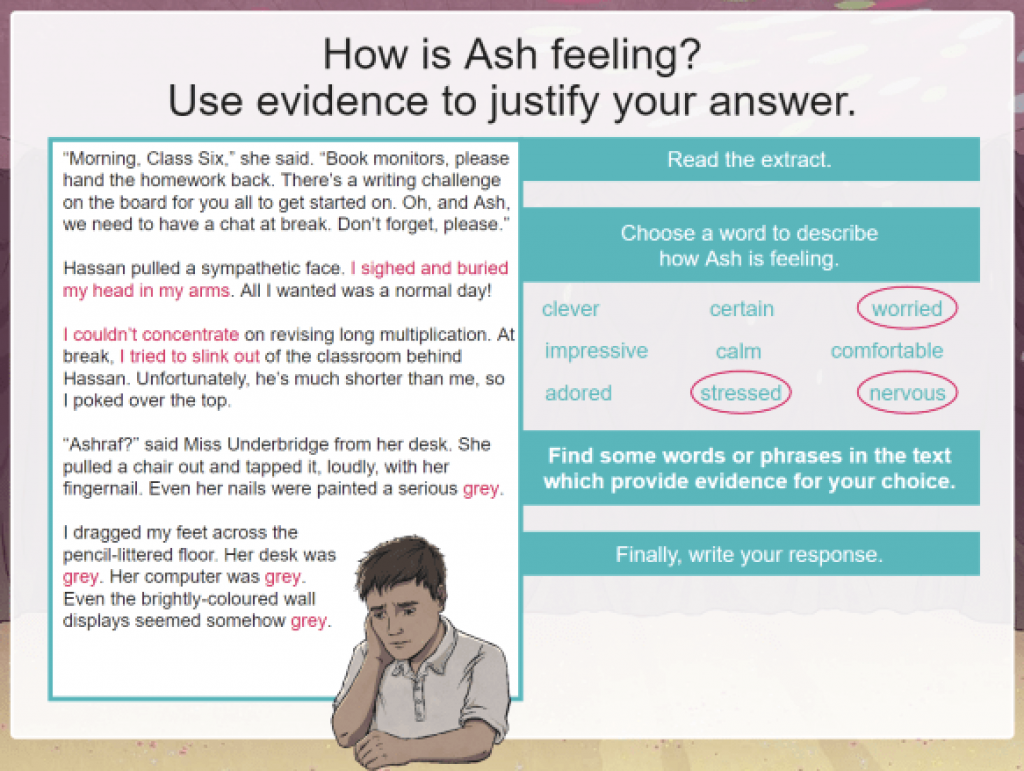Week 7 of the Mini Series: Supporting Reading Comprehension is upon us, as is a new calendar year! Today we will be discussing how to encourage monitoring comprehension.
I am so excited that our first blog back is about how we can boost comprehension confidence as it is a real passion of mine.
If you have been following along with our comprehension mini-series, I’d love to hear how our 7 foundational techniques have supported your child in feeling more confident.
Like this:
“Very much looking forward to the 6-week group. I believe it will help Y develop the skills to answer exam-style questions”
Year 5 Mum, Ascot
If today is your first time landing on the blog, then you’re in luck! As today is the final blog post of this series, you can now binge-read all of our techniques and download all of the tools to support your child’s comprehension.
Here are the 7 strategies of comprehension:
- Making connections
- Making inferences
- Predicting
- Generating and asking questions
- Summarising
- Visualising
- Comprehension monitoring
This, of course, leaves “comprehension monitoring” as today’s topic.

How to Encourage Comprehension Monitoring
One of the best skills we can teach our students is to be self-aware. Of course, this skill will have great implications far beyond the classroom, which is what we’re all about here at Bettering Youth. But let’s focus on how it can improve reading comprehension.
To begin, let us define self awareness:
Self-awareness is the ability to see yourself clearly and objectively through reflection and introspection.
Courtney E. Ackerman, MSc., Researcher
16-10-2020
positivepsychology.com
Ergo, by encouraging students to reflect and begin to identify where they themselves felt lost, or began to lose concentration, we are helping them hone their self-awareness skills.
So how do we encourage this reflective, self-aware state while reading?
Teaching Active Reading Strategies from Theoretical to Abstract
The best way to teach students to be self-aware is to teach them how to read actively. Thankfully, the skills we have viewed over the last 6 weeks are all integral for active reading.
Thus, the best thing we can do for children is to break each of these skills down in a way that allows readers to progress from concrete understanding to more abstract applications.
An example of this was the presentation I did for our 6-Week Comprehension Club’s Free Trial in early December.
We began by looking at a wrapped parcel.
The children shared some of their predictions:
V: water bottle
K: celebrations chocolate
N: bottle
As you can see, they are very simple predictions with no reasoning. When we ask children to make deductions or create predictions, assessors always expect a reason with evidence.
So we practised explaining why we know something to be true with another concrete example:
Following this, once we established that the rule of deduction is that it follows an “IF-THEN” approach, we moved into reading texts.
We highlighted key words and discussed their implied meanings. This is where a strong vocabulary comes in handy.

We finished off by looking at a film to assess how these skills can be used in interpreting human interactions and understanding body language.
All of these scaffolded activities allowed the children to come up with the final deductions for the wrapped parcel at the end of our session.
Following are some of my favourite:
T: If it shakes then it will be lego
Y: If it is a cylinder then it could be a bottle, because it is tall yet small.
K: I think it is a chocolate box because the shape of it is like a chocolate box that I have at home and the size of it is also like it
V: A water bottle because if this is a circular shape then a water bottle is a circular shape *cylindrical
I: As it is cylindrical shape so it is a bottle
Note: There were +35 children who offered ideas that were far better developed than the previous “water bottle” predictions shared at the start of the 30-minute session.
As you can see, our short and snappy session allowed children to move from a theoretical understanding of deduction, to a concrete use of deduction, to a more abstract example of making a deduction. This proves that the best way to teach comprehension monitoring is to scaffold each of the six skills for reading comprehension and promote self reflection along the way!
Bettering Youth’s Comprehension Club
At the start of the second lockdown, Bettering Youth connected with all of our parent clients and asked them what their greatest obstacle is in supporting their children. Some of these families have had a very consistent approach to education since February 2019, while other families had struggled with no support from schools or big breaks due to the Corona Virus. Despite their varied experiences, one of the most common struggles faced by families is supporting Reading Comprehension.
As a result, Bettering Youth worked alongside these parents to develop a 6 week programme that will boost confidence in comprehension.
Our curriculum will look at the six skills covered in the Comprehension Mini Series, and of course, take on the active reading approach of encouraging self-reflection.
If you want your child to get taught these foundational steps, be sure to register for the 6-week comprehension club before “seats” run out!



Pingback: Comprehension Technique: How to Make Inferences - Bettering Youth
Pingback: Best Ways to Boost Reading Comprehension - Making Connections - Bettering Youth
Pingback: Creative Writing Prompts: Myths, Magic and Mayhem - Bettering Youth
Pingback: 6 Book Recommendations Reluctant Readers will Love - Bettering Youth